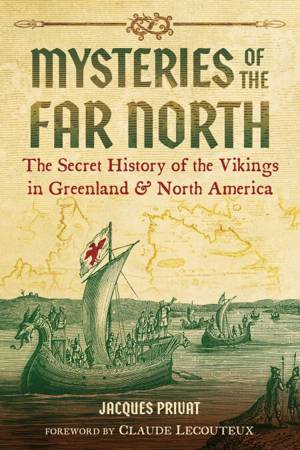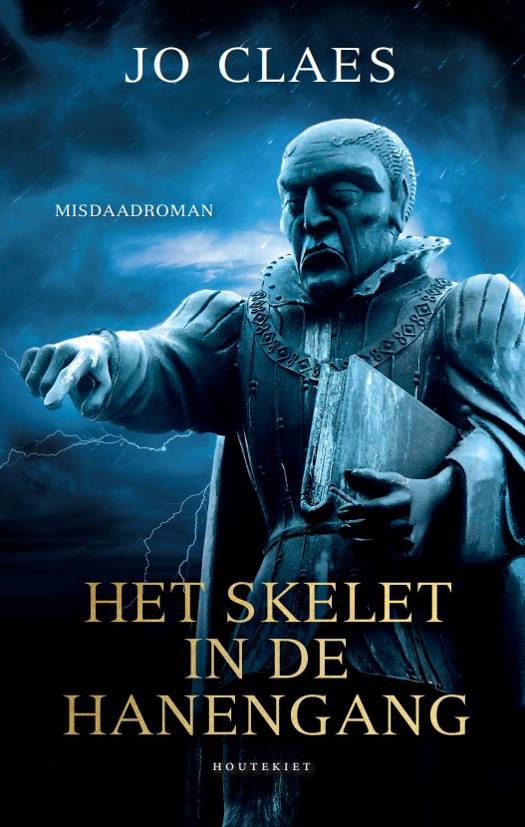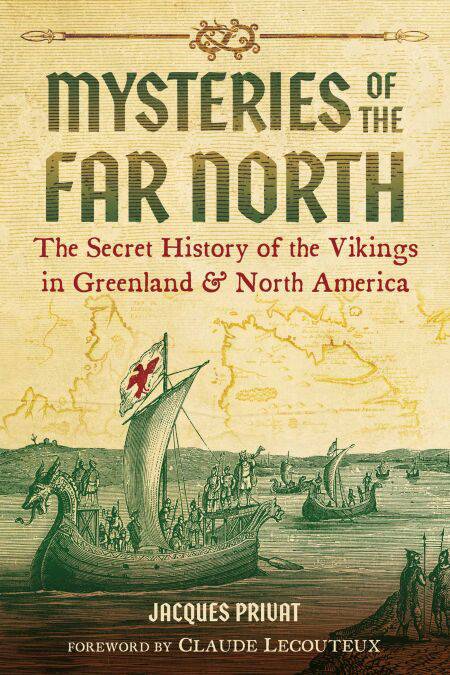
- Afhalen na 1 uur in een winkel met voorraad
- Gratis thuislevering in België vanaf € 30
- Ruim aanbod met 7 miljoen producten
- Afhalen na 1 uur in een winkel met voorraad
- Gratis thuislevering in België vanaf € 30
- Ruim aanbod met 7 miljoen producten
Zoeken
Mysteries of the Far North E-BOOK
The Secret History of the Vikings in Greenland and North America
Jacques Privat
E-book | Engels
€ 27,95
+ 27 punten
Uitvoering
Omschrijving
Presents evidence of early Norse settlement in Greenland and North America
• Explores in depth how Greenland and its surroundings were inhabited for nearly 5 centuries by two Nordic colonies, Vestri-bygd and Eystri-bygd
• Shares extensive evidence from the still-living indigenous oral tradition of the Far North as well as surviving sculptural art to show how the Vikings and the Inuit formed a harmonious community
• Examines ancient maps and other cartography, such as the 15th-century Martin Behaim globe, as well as explorers’ records of their voyages
Sharing his extensive and meticulous research, Jacques Privat reveals that the Vikings were in Greenland, its neighboring islands, and the eastern shores of Canada long before Columbus. He examines in depth how Greenland and its surroundings were inhabited for nearly five centuries by two Nordic colonies, Vestribygð and Eystribygð, which disappeared mysteriously: one in 1342 and the other in the 16th century. Drawing on the still-living indigenous oral tradition of the Far North, as well as surviving sculptural art carvings, he shows how, far from being constantly at odds with the native population, the Norsemen and the Inuit formed a harmonious community. He reveals how this friendly Inuit-Viking relationship encouraged the Scandinavian settlers to forsake Christianity and return to their pagan roots.
Working with ancient European maps and other cartography, such as the 15th-century Martin Behaim globe, as well as explorers’ records of their voyages, the author examines the English, Irish, German, Danish, Flemish, and Portuguese presence in the Far North. He explores how Portugal dominated many seas and produced the first correct cartography of Greenland as an island. He also reveals how Portugal may have been behind the disappearance of the Vikings in Greenland by enslaving them for their European plantations.
Dispelling once and for all the theories that the Inuit were responsible for the failure of the Scandinavian colonies of the Far North, the author reveals how, ultimately, the Church opted to cut all ties with the settlements—rather than publicize that a formerly Christian people had become pagan again. When the lands of the Far North were officially “discovered” after the Middle Ages, the Norse colonies had vanished, leaving behind only legends and mysterious ruins.
• Explores in depth how Greenland and its surroundings were inhabited for nearly 5 centuries by two Nordic colonies, Vestri-bygd and Eystri-bygd
• Shares extensive evidence from the still-living indigenous oral tradition of the Far North as well as surviving sculptural art to show how the Vikings and the Inuit formed a harmonious community
• Examines ancient maps and other cartography, such as the 15th-century Martin Behaim globe, as well as explorers’ records of their voyages
Sharing his extensive and meticulous research, Jacques Privat reveals that the Vikings were in Greenland, its neighboring islands, and the eastern shores of Canada long before Columbus. He examines in depth how Greenland and its surroundings were inhabited for nearly five centuries by two Nordic colonies, Vestribygð and Eystribygð, which disappeared mysteriously: one in 1342 and the other in the 16th century. Drawing on the still-living indigenous oral tradition of the Far North, as well as surviving sculptural art carvings, he shows how, far from being constantly at odds with the native population, the Norsemen and the Inuit formed a harmonious community. He reveals how this friendly Inuit-Viking relationship encouraged the Scandinavian settlers to forsake Christianity and return to their pagan roots.
Working with ancient European maps and other cartography, such as the 15th-century Martin Behaim globe, as well as explorers’ records of their voyages, the author examines the English, Irish, German, Danish, Flemish, and Portuguese presence in the Far North. He explores how Portugal dominated many seas and produced the first correct cartography of Greenland as an island. He also reveals how Portugal may have been behind the disappearance of the Vikings in Greenland by enslaving them for their European plantations.
Dispelling once and for all the theories that the Inuit were responsible for the failure of the Scandinavian colonies of the Far North, the author reveals how, ultimately, the Church opted to cut all ties with the settlements—rather than publicize that a formerly Christian people had become pagan again. When the lands of the Far North were officially “discovered” after the Middle Ages, the Norse colonies had vanished, leaving behind only legends and mysterious ruins.
Specificaties
Betrokkenen
- Auteur(s):
- Uitgeverij:
Inhoud
- Aantal bladzijden:
- 456
- Taal:
- Engels
Eigenschappen
- Productcode (EAN):
- 9781644114483
- Verschijningsdatum:
- 13/03/2023
- Uitvoering:
- E-book
- Beveiligd met:
- Adobe DRM
- Formaat:
- ePub

Alleen bij Standaard Boekhandel
+ 27 punten op je klantenkaart van Standaard Boekhandel
Beoordelingen
We publiceren alleen reviews die voldoen aan de voorwaarden voor reviews. Bekijk onze voorwaarden voor reviews.











